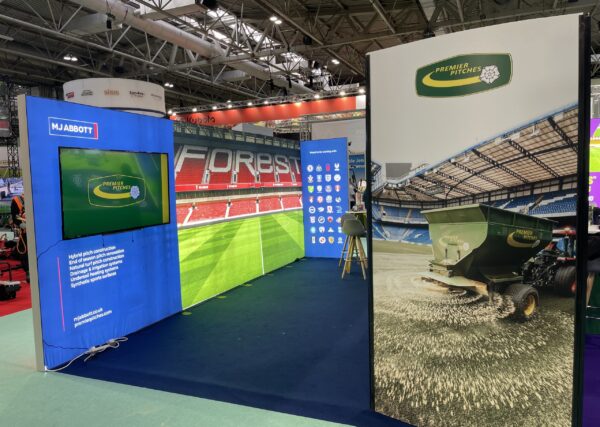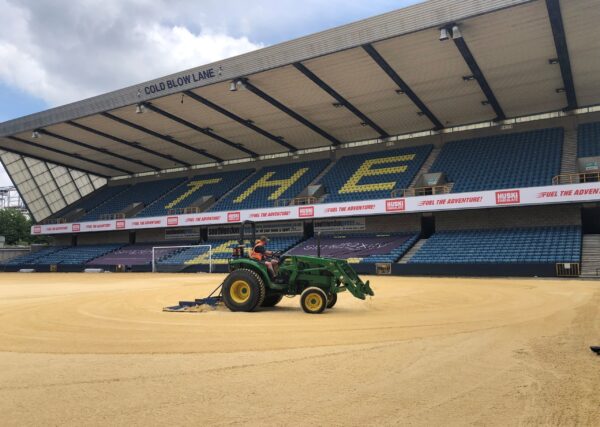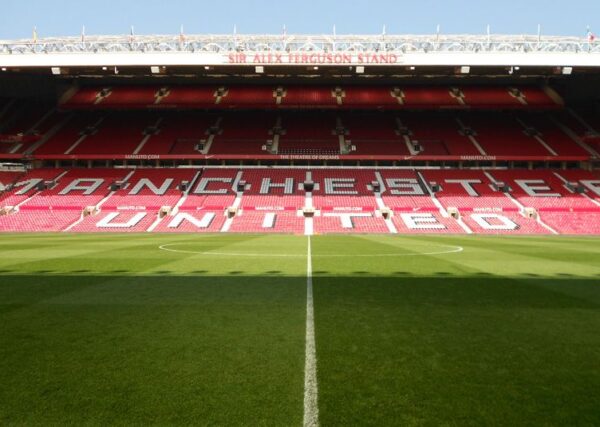We are all no doubt aware of the French and Russian revolutions but the revolution that I am thinking about is the little known Dutch revolution. The Oxford dictionary defines the word revolution in several ways but the definition that I want to concentrate on is ‘completely change or reconstruct’.
Most aspects of sports turf management hold advantages and disadvantages, for instance, in green keeping the majority of play is concentrated during the summer months when the soil is active and the grass plant which it supports is functioning thus enabling regeneration. The disadvantage is that it is nigh on impossible to undertake any serious remedial work during the close season to golf greens without causing considerable disruption.
In winter games pitch management we have the problems associated with play continuing through out the winter months when the soil is in a state of suspended animation and the grass plant, for the main part, remains in limited dormancy. Obvious problems then occur which can in turn lead to less than favourable playing conditions. The advantage of winter games pitch management is that we normally have a period during the close season to attempt to rectify faults and make improvements, which will hopefully carry the pitch through the rigours of the next season.
There is no doubt in my mind that stadium pitch managers whether they be in the premiership or the conference league would love to manage a dream pitch, constructed to state of the art specifications like the ones at West Ham or Derby County. This dream pitch would then be situated in a stadium designed on the lines of the Macalpine Stadium, Huddersfield. Dream on; for the majority of clubs this dream will never become reality and they are forced to undertake limited improvements to the pitch whilst the stadium continues to create additional problems as it evolves.
Without exception the main protagonists causing problems to winter games pitches are poor drainage and the dreaded Poa Annua. No need to go into detail about the problems associated with poor drainage and the many systems available to rectify it. Most clubs have now addressed the problems associated with poor drainage and more often than not Poa Annua remains one of the biggest hurdles in the battle to produce the perfect pitch.
Here are just a few words commonly associated with Poa Annua – thatch forming, weak, unstable, shallow rooted, poor colour, susceptible to disease, susceptible to drought the list goes on. Some Groundsmen seem to have the knack when it comes to managing Poa Annua and work tirelessly to produce surfaces, which in the main perform reasonably well. Given the choice I am sure even they would rather be tending to a stand of healthy Perennial Ryegrass.
Let’s now look at a situation familiar to all grounds managers. A well-constructed pitch with a good drainage system which performs suitably for the first few seasons but then fails to live up to expectations, this can often be attributed to Poa Annua. I have written on this subject in the past and waxed lyrical about the Groundsman requiring an armoury of expertise and equipment to be at his disposal if a pitch is to succeed without reconstruction. It still goes without saying that the machinery and expertise are required but all too often clubs are unwilling to financially support the Groundsman leading to deterioration of the pitch, the vicious circle then starts culminating all too often in expensive reconstruction work.
Views differ from person to person with regards to what polices should be adopted to produce the best winter games playing surfaces. I personally, have for a number of years supported and continue to support the philosophy of a clean open sward with little or no organic build up. The theory behind this is that if no thatch exists then air, light, water, and nutrients are all readily available to the grass plant and anaerobic conditions are far less likely to appear. To achieve this type of situation on any pitch one must start at the beginning of the close season with a clean Perennial Ryegrass sward, during the season this may be nurtured without having to make compromises for additional Poa Annua infestations. A lesson can be learnt from the cricket Groundsman who decimates any existing grass cover during renovation, prior to re-establishment with new seed. When the sward does establish it is clean and free from thatch accumulations which can not be tolerated if a quality pitch is to be produced. Often we sow top rated Ryegrass seed into a thatchy Poa dominant winter games sward. How much of this expensive commodity actually survives to reach maturity? I suspect a large proportion either perishes in the thatch layer or is outcompeted by the ever spreading Poa Annua. Yet then another reason to sow into a clean root zone as the cricket groundsman does. Seed soil contact is paramount for good germination and establishment, after germination the young plants need the ability to tiller and mature, this will not be achieved if the seedlings are smothered with existing Poa Annua infestations.
So, you ask, what has the little known Dutch revolution mentioned earlier, got to do with all this? Manufacturers make claims that their new machine or concept will revolutionise the management of sports turf, rarely do I become exited and enthusiastic about all the claims made. There are however exceptions, one of which was the introduction of the Verti-Drain, this machine has over the years contributed so much to the sports turf management industry and is now so much part and parcel of any management programme that we would be lost without it. Other manufactures have come up with similar machines with other names but the word Verti-Drain has made such an impact that it remains part of our vocabulary. The Verti-Drain has then, become the first player in the Dutch revolution.
The next Dutch revolution, I predict will come from the Koro range of machinery introduced recently to the UK market. Last year I was privileged to visit Holland to see the range of equipment at first hand and the results of its application. I also met Ko Rodenburg the man with the vision to develop the equipment. The machinery was initially made to service the needs of local authority pitches in Rotterdam, the results have been outstanding. Along with others I was impressed by the achievements of Ko Rodenburg and the resultant quality of the pitches. The range of machinery includes the Field Top Maker, Recycling Top Dresser, Top Drainer, Speed Harrow and the Culti-roll. Obviously different situations require different applications of the machinery either singularly or collectively.
Briefly the machines perform the following functions:
- The Field Top Maker could be described as a high powered flail mower which has the ability to remove arising debris by means of a conveyor in to trailers for disposal. This machine can be used in different modes one of which the Dutch describe as “fraise” mowing. Fraise mowing is when the machine is set to remove only herbage from the top of the pitch. When the machine is in this mode it’s action grubs out shallow rooted Poa Annua and removes the entire plant along with any thatch accumulations. The top of the Ryegrass plant is also removed but the body of the plant remains intact thus allowing re-growth to take place. In effect one pass of this machine will far out way the benefits of continual scarification, which many groundsmen undertake annually to remove Poa Annua and thatch. The machine can also be used to entirely remove the surface of the pitch effortlessly and in one operation. Once the process is complete the pitch may be re-cultivated or recycled with the Recycling Dresser and sown to establish Perennial Ryegrass ready for the season to come. This process will have an enormous impact on the majority of clubs who have no financial resources to undertake reconstruction but have succeeded in attaining a suitable degree of surface drainage. In subsequent seasons only fraise mowing will be required to grub out the majority of any Poa colonisation prior to renovation being undertaken in the conventional way.
- The Recycling Dresser acts to excavate and re-distribute material from the root zone. Depth graduations can vary from 50mm to 200mm to suit conditions. The machine in effect removes a proportion of the root zone by means of coulters, it then decompacts, aerates and re-distributes the material prior to its integration back into the rootzone by speed harrowing. This machine replaces the use of top dressings in certain situations thus making substantial cost savings by recycling existing material. Certain pitches will benefit from the recycling dresser, such as pitches which have been reconstructed using sand amelioration. Material can be excavated and redistributed fresh and aerated with the added benefit of any deep-seated compaction being removed by the process.
- The Field Top Drainer acts in much the same way as a sand-slitting unit, it does however remove spoil prior to replacing it with sand. The sand is forced into the slit created by rotating culters thus creating a well connected link to the drains below.
Several case scenarios exist where the Koro machinery could be put to good use. These vary from the well-constructed pitch, which is draining well but showing signs of damage by scaring or divotting, to the pitch that is in need of a total rejuvenation but the finances are not in place to undertake such work. Individuals would need to assess the type and amount of work required for their particular application. Even pitches showing no immediate signs of deterioration would in my opinion benefit from using the Field Top Maker as the basis of end of season renovation to remove Poa Annua and thatch allowing the best possible start for the season to come.
You may be associated with one of the minority of clubs who have the vision and resources to create a state of the art pitch for the season 2000/2001 in which case you, for the time being, will have little use for the Dutch revolution apart from maybe removing the surface of the old pitch with the Field Top Maker prior to reconstruction. You could equally be one of the majority of clubs who for one reason or another must continue to improve your pitch as cost effectively as possible without the chance to reconstruct, in which case I would seriously look at employing one or all of the Koro range of machines. I remain convinced that come this time next season you will be recommending to others that they consider the Dutch revolution as an alternative to standard renovation practices. By this time you will be looking back and wondering how you ever managed to produce a suitable pitch working with Poa Annua and all the associated problems it causes. Of course the use of the Dutch revolution will not instantly produce a pitch which looks after itself. Attention must be paid to close season scarification, aeration, mowing, irrigation, fertilisation etc. all of which should be administered with a balanced approach. What the Dutch revolution will do is provide a level playing field from which to start on a relatively sensible budget. The rest is down to good common sense management and the financial backing from the club to allow this to occur.
Related news
Saltex 2024
Saltex 2024 We can’t wait to reconnect with our customers, suppliers, and industry friends at Saltex later this month! This event serves as a ...
Pitches – Why Clubs Should Prepare Rather Than Repair
Professional football pitch management is no longer about providing a surface which will withstand the rigours of 90 minutes of football, any league ...
Associate Articles
News Release by Campey Turf published 1st July 2010 'Best ever' renovation results achieved at Manchester United's Trafford Training Centre Joe ...




